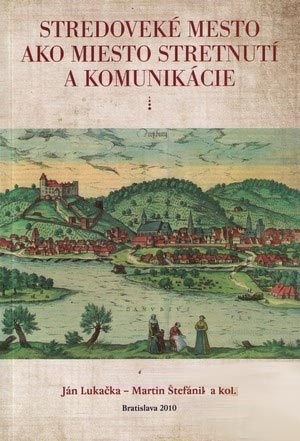Author(s): Smilja Marjanović-Dušanić / Language(s): Serbian
Publication Year: 0
The paper presents an analysis of the impact that the apocalyptic texts had in the Serbian environment in the 15th and 16th centuries, a period which saw an increasingly important re-actualization of prophetic texts—most of all those attributed to Methodius of Patara and Leo the Wise—characteristic of the time of the fall of the Byzantine Empire and the subsequent Venetian plans for the colonization of the late medieval Mediterranean.
In view of the changed historical situation as a result of Ottoman expansion, the purpose of the new versions of prophetic texts, particularly popular in the 16th century, was to foretell the future or second coming of the last liberator king who would re-establish the empire of the Rhomaioi. It was at that time that Byzantine apocalyptic literature rode a new wave of popularity, and that illuminated prophetic manuscripts were created in monastic scriptoria in the conquered Serbian lands. It was no accident that one such manuscript could be found at the monastery of Mileševa, just as it is not surprising that this particular milieu, where the tomb of St. Sava of Serbia was enshrined and which, consequently, was the focus of his cult, attributed the authorship of the prophecy to St. Sava.
The paper offers the analysis of a report of Cornelius Duplicius Schepper, the imperial secretary and envoy of the Viennese court, claiming that he saw an illuminated Slavic manuscript of prophecies attributed to St. Sava at Mileševa in 1533. There is no doubt that the manuscript related the prophecy of the fall of Constantinople, because it contained the illustration of a city with seven towers (“seven hills”) and an iron gate. The chancellor also mentions illuminations depicting a fox, an eagle, a crowned lion, and a ship carrying the emperor and soldiers. This incidental information about the now lost manuscript suggests echoes of Pseudo-Methodius’s prophecies or the Oracles of Leo the Wise, whose Slavic translations are known to have appeared quite early. The Mileševa apocalyptic manuscript arose against the background of an already developed literary and genre tradition of prophecy and related writings such as “lamentations” and prayers which contained prophetic elements, possibly in emulation of popular Byzantine models.
The earliest illustrations of prophetic texts about the end of the world do not appear until the second half of the 15th century, usually in Late Byzantine manuscripts. The best example is a rare 16th century manuscript kept at the Biblioteca Marciana (gr. VII, 22), a singular compilation of various Byzantine apocalyptic narratives. The text contains 410 illuminations, which are relevant to the topic discussed here insofar as they may shed some light on the enigmatic manuscript referred to by Schepper. Namely, the surviving compilations of Byzantine prophetic texts show that illustrated texts of this type are rare and relatively late, or not earlier than the time of Schepper’s visit to Mileševa. For several reasons, the centre of their origin was certainly Venice, with which Mileševa maintained special relations. As early as the 1530s, which is the time of Schepper’s visit, Božidar Vuković, a publisher and printer who had started his Venetian printing house in 1519, was in close contact with the monastery through its monks. The manuscript known to us only from Schepper’s report may have been the result of direct contact with Venetian models, which, by the way, were widespread in the Venetian colonies in Greece, notably Crete and Cyprus. The 16th century saw the emergence of a number of pseudo-prophetic texts accommodated to the political plans of the Habsburg and Hungarian courts. One of them, known as the Prognosticon, penned by the court astrologer of Matthias Corvinus at about the time of Schepper’s visit to Mileševa (1534), was focused on recent events such as the Ottoman conquest of Belgrade and Rhodes, the fall of Hungary and the failed siege of Vienna.
An inevitable subject matter of the illustrations of prophecies created at the scriptoria such as that at Mileševa is the Pseudo-Methodian theme of the fall of the “city of seven hills”, which assumed layered meanings in the given context. Essentially, it is the archetypal Christian fortress which, in the reality of the 1530s, seemed increasingly close to the popular apocalyptic vision
More...










